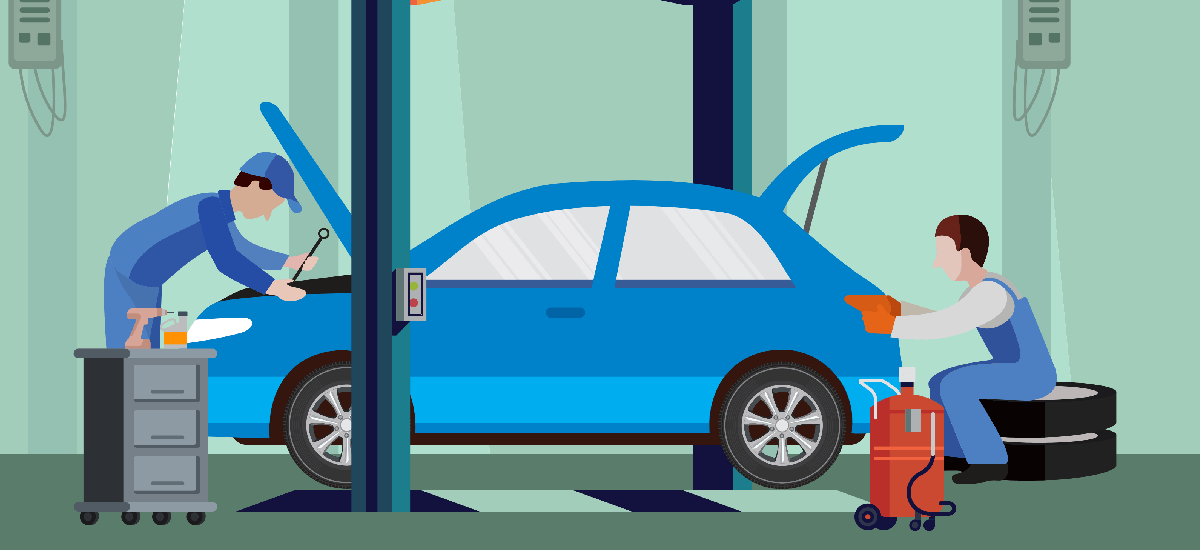All Categories
Featured
Tire turnings are among the most basic yet most efficient upkeep tasks to ensure your car runs efficiently and securely. This regular solution redistributes tire wear, supplying numerous advantages for your auto's efficiency, security, and your budget.
What Does Tire Rotation Involve?
Tire turning is the process of occasionally transforming the position of each tire on your automobile. Front tires might be exchanged with back ones, or tires might be moved diagonally. The particular pattern relies on aspects like your lorry's drivetrain (front-wheel, rear-wheel, or four-wheel drive) and the sort of tires you have.
![]()
Why Tire Turnings Are Crucial
Promotes Also Step Put On. Different tires bear different amounts of weight and anxiety depending on their setting. Due to the fact that they handle steering and braking, front tires typically wear much faster. Normal turnings cancel the wear, guaranteeing all 4 tires have similar tread depths.
Expands Tire Life Expectancy. Unequal wear leads to premature tire replacements. Rotating your tires can extend their lifespan, conserving you cash with time.
Improves Vehicle Efficiency. Well balanced tires improve security, dealing with, and grip. Whether you're collaring, stopping, or driving on unsafe roadways, equally worn tires ensure a smoother and safer driving experience.
![]()
Boosts Fuel Efficiency. Tires with uneven tread wear can develop more rolling resistance, that makes your engine work tougher and eats more fuel. Normal rotations help keep optimal gas effectiveness.
Makes Certain Security. Used tires can endanger stopping range and control. By turning your tires, you keep also wear and lower the threat of blowouts or skidding.
How Frequently Should You Turn Your Tires?
Experts recommend turning your tires every 5,000 to 7,500 miles. A convenient technique is to combine tire turnings with oil changes. Always consult your vehicle's proprietor guidebook for details standards.
Common Turning Patterns
Rotation patterns rely on your lorry's drivetrain and tire type:
Front-Wheel Drive (FWD): Front tires move to the back, and rear tires cross to the front.
Rear-Wheel Drive (RWD): Back tires relocate to the front, and front tires cross to the rear.
Four-wheel Drive (AWD): Tires comply with an "X" pattern to ensure balanced wear.
Directional Tires: These tires need to remain on the exact same side of the automobile and are exchanged front to rear.
Signs Your Tires Need Rotation
Uneven walk wear.
![]()
Decreased gas efficiency.
Vibrations while driving, particularly at broadband.
Problem taking care of the automobile in unfavorable weather.
Final Thoughts
Tire rotations are an easy means to shield your investment and improve your driving experience. By rearranging wear, you can prolong the life of your tires, boost fuel effectiveness, and guarantee your safety on the road. Set up routine tire turnings with a trusted mechanic and make it a consistent part of your car's upkeep regimen.
What Does Tire Rotation Involve?
Tire turning is the process of occasionally transforming the position of each tire on your automobile. Front tires might be exchanged with back ones, or tires might be moved diagonally. The particular pattern relies on aspects like your lorry's drivetrain (front-wheel, rear-wheel, or four-wheel drive) and the sort of tires you have.

Why Tire Turnings Are Crucial
Promotes Also Step Put On. Different tires bear different amounts of weight and anxiety depending on their setting. Due to the fact that they handle steering and braking, front tires typically wear much faster. Normal turnings cancel the wear, guaranteeing all 4 tires have similar tread depths.
Expands Tire Life Expectancy. Unequal wear leads to premature tire replacements. Rotating your tires can extend their lifespan, conserving you cash with time.
Improves Vehicle Efficiency. Well balanced tires improve security, dealing with, and grip. Whether you're collaring, stopping, or driving on unsafe roadways, equally worn tires ensure a smoother and safer driving experience.

Boosts Fuel Efficiency. Tires with uneven tread wear can develop more rolling resistance, that makes your engine work tougher and eats more fuel. Normal rotations help keep optimal gas effectiveness.
Makes Certain Security. Used tires can endanger stopping range and control. By turning your tires, you keep also wear and lower the threat of blowouts or skidding.
How Frequently Should You Turn Your Tires?
Experts recommend turning your tires every 5,000 to 7,500 miles. A convenient technique is to combine tire turnings with oil changes. Always consult your vehicle's proprietor guidebook for details standards.
Common Turning Patterns
Rotation patterns rely on your lorry's drivetrain and tire type:
Front-Wheel Drive (FWD): Front tires move to the back, and rear tires cross to the front.
Rear-Wheel Drive (RWD): Back tires relocate to the front, and front tires cross to the rear.
Four-wheel Drive (AWD): Tires comply with an "X" pattern to ensure balanced wear.
Directional Tires: These tires need to remain on the exact same side of the automobile and are exchanged front to rear.
Signs Your Tires Need Rotation
Uneven walk wear.

Decreased gas efficiency.
Vibrations while driving, particularly at broadband.
Problem taking care of the automobile in unfavorable weather.
Final Thoughts
Tire rotations are an easy means to shield your investment and improve your driving experience. By rearranging wear, you can prolong the life of your tires, boost fuel effectiveness, and guarantee your safety on the road. Set up routine tire turnings with a trusted mechanic and make it a consistent part of your car's upkeep regimen.
Latest Posts
Find the Top Auto Repair Deals in Montclare, Chicago
Published May 24, 25
1 min read
Trustworthy Overhead Door Solutions for Houses and Businesses
Published May 23, 25
1 min read
Improve Your Residential Property with Overhead Door Systems
Published May 22, 25
1 min read